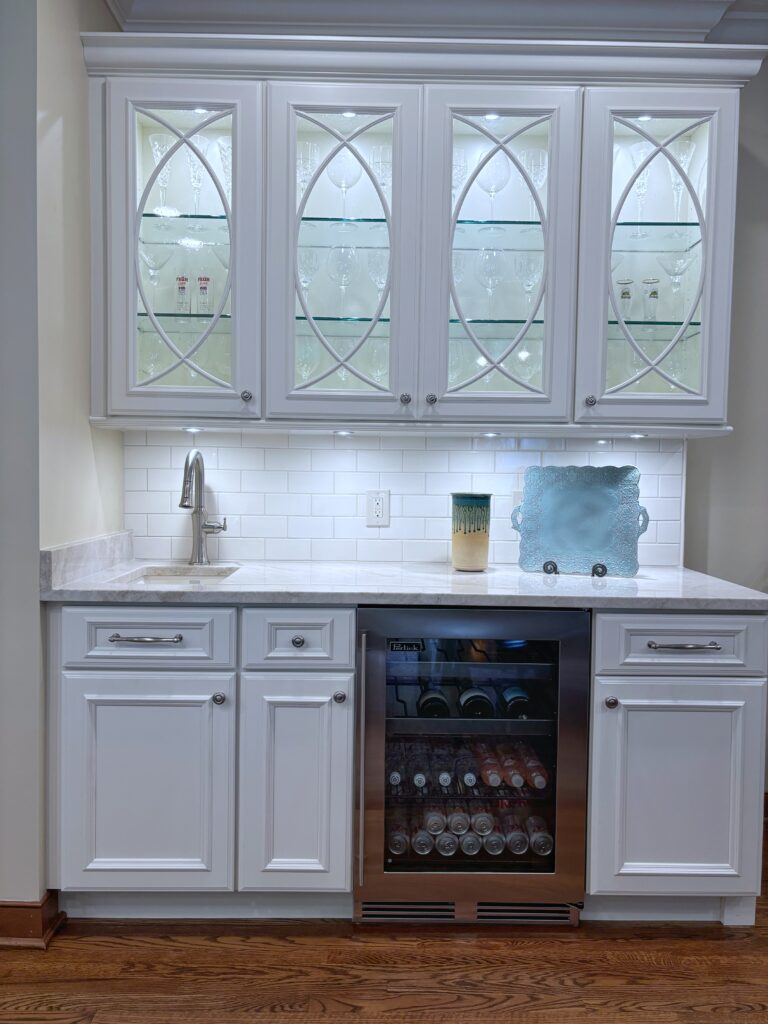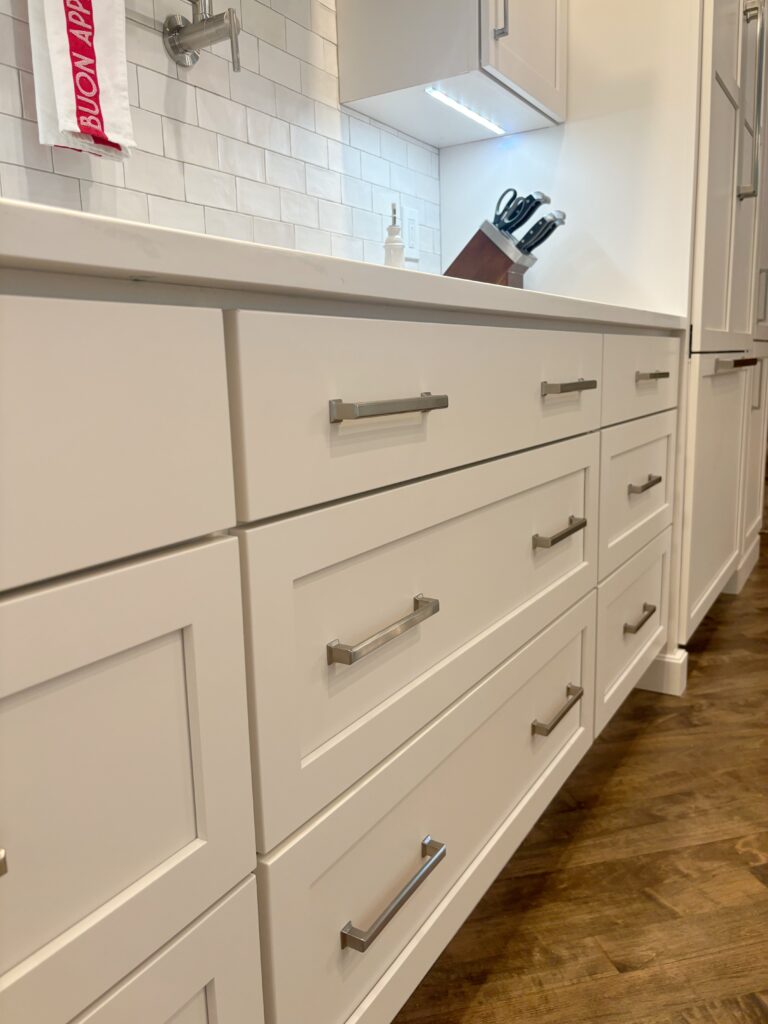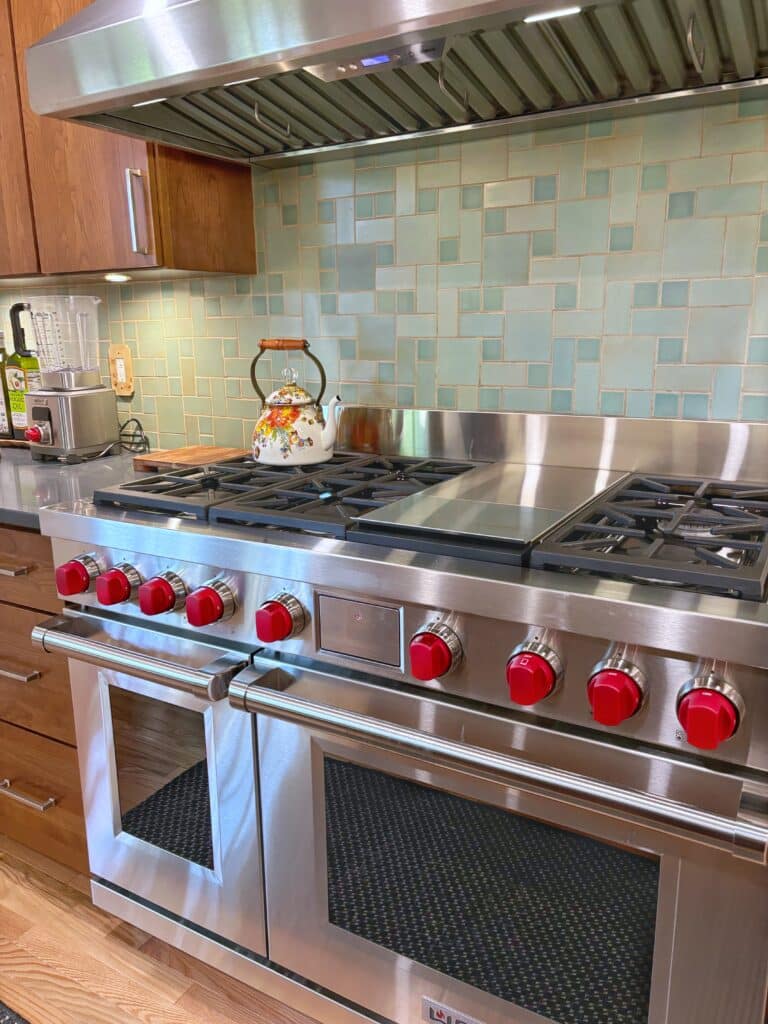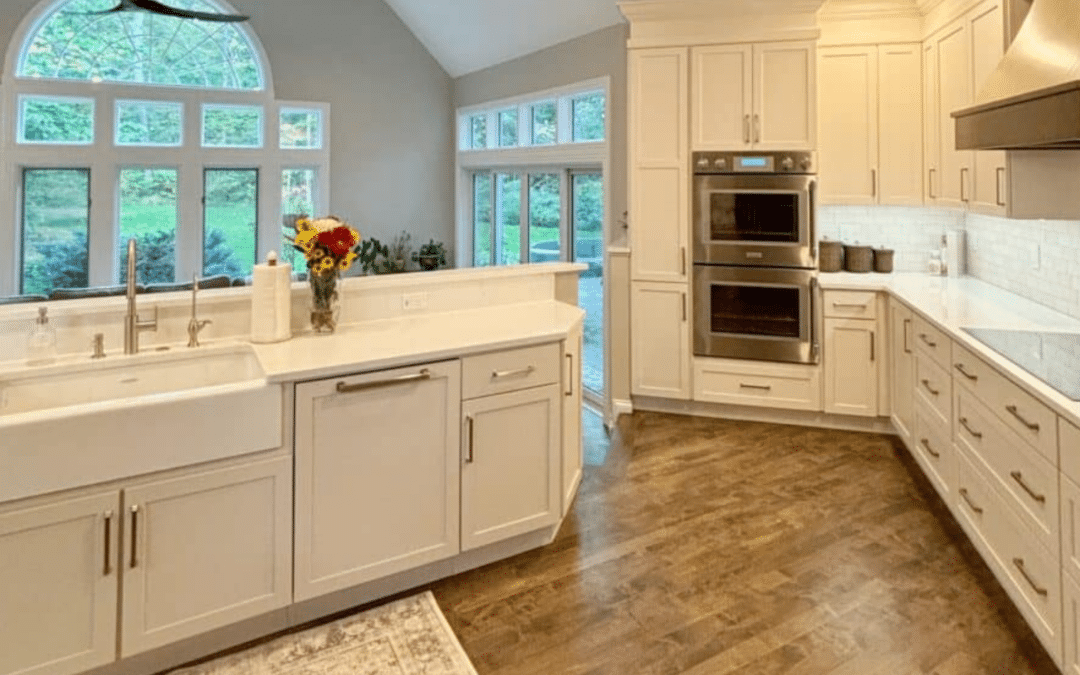Remodeling a kitchen to accommodate aging in place design is advantageous in several ways. Aging in place makes your kitchen safer and easier to use now and in the future. It also saves you money and raises the potential value of your home. With an aging in place kitchen remodel, you can enjoy enhanced accessibility and convenience while you cook and commune with your loved ones. The kitchen designers at Capozzi hold Certified Aging in Place Specialist credentials, so we can guide you through creating a functional, comfortable, and stylish kitchen for all stages of life.
Key Features for an Aging in Place Kitchen Remodel
Updated Lighting
Proper lighting is crucial in the kitchen, but it becomes even more important for those aging in place. Full, well-distributed lighting can help prevent accidents and make daily tasks easier. Under-cabinet lighting brightens work surfaces, and recessed or adjustable fixtures provide general illumination. Effective lighting makes your kitchen safer and more navigable with increased visibility.

Non-Slip Flooring
Because spills can happen in the kitchen, injuries can, too. For this reason, installing non-slip flooring during your aging in place kitchen remodel is critical for reducing slips and falls. Options for non-slip flooring include textured vinyl, rubber, or high-quality ceramic tiles with a slip-resistant finish. The right flooring keeps your kitchen safe even when moisture is present.
Easy-to-Clean Surfaces
No one should be cooking in a dirty kitchen. Thankfully, certain substances help you maintain a hygienic space. Quartz and granite are durable, fuss-free materials that make countertops and backsplashes easy to clean. These materials resist stains and require minimal upkeep for a low-stress kitchen environment.
Decorative Hardware
Decorative hardware may seem minor, but it does affect accessibility. Your kitchen will become much more user-friendly when you replace cabinet hardware with ergonomic handles. Lever-style handles or knobs are easier to grasp, so they’re the best choice for an aging in place kitchen remodel.

Improved Cabinetry Layout
Kitchenwares should be easy to reach for everyone. So, crafting a kitchen that works users of every age and stage may involve reconfiguring the cabinetry layout. Your cabinetry will be more efficient with features like pull-out shelves, lazy Susans, and soft-close drawers.
Accessible Appliances
Your kitchen won’t be ready for aging in place with complicated appliances. So, you’ll want to install simplified appliances instead. Accessible appliances offer front controls, touchless features, countertop cooktops, or wall-mounted ovens to minimize bending and reaching. These thoughtful changes streamline aging in place in the kitchen.

Adjusted Counter Heights
As we age, we may occasionally prefer to sit rather than stand during food prep. We may also have little helpers in the kitchen with us. In these situations, a lowered countertop would be beneficial. Your kitchen will be more comfortable for everyone when you modify the counter heights to accommodate both seated and standing use. So, installing adjustable-height countertops or lowering existing counters prepares your kitchen for aging in place.
The Value of an Aging in Place Kitchen Remodel
The presence of aging-in-place features significantly boosts the long-term value of your kitchen. These enhancements improve safety, convenience, and comfort, making daily activities easier and reducing the need for future renovations. A well-designed, accessible kitchen also adds to the overall appeal and functionality of your home.
At Capozzi Design Build, we specialize in building kitchens that support aging in place. Our team includes Aging in Place Certified Designers with CAPS (Certified Aging-in-Place Specialist) and CLIPP (Certified Living In Place Professional) certifications. We can help you explore the best design solutions and ensure that your kitchen meets your needs now and in the future. Contact us today to discuss your aging in place kitchen remodel.


